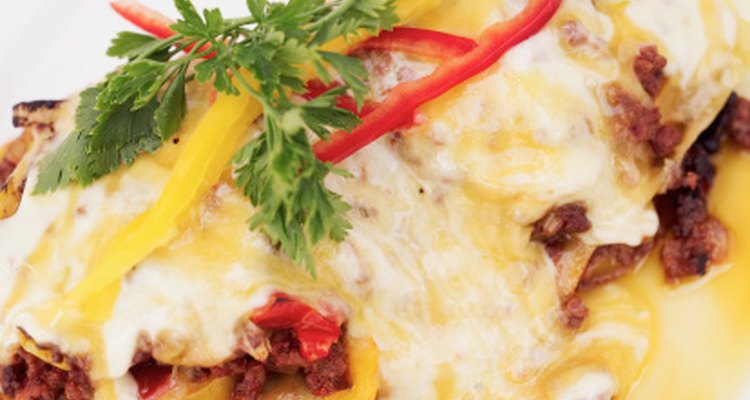
The world is full of cheese varieties, some soft and runny, some hard and dry. While some types of cheese are best eaten as they are, there are others that are the most delicious when melted. Whether used in grilled cheese sandwiches, turned into cheese sauce, grated over enchiladas or melted in quesadillas, cheeses that are made to melt will please you and your family.
Gruyere and Emmental
Gruyere and Emmental are varieties of semi-firm Swiss cheese. They both possess the signature Swiss cheese nuttiness and holey texture. Both are excellent melting cheeses and are typically used in fondue, as well as in grilled sandwiches and sauces (Gruyere is the cheese called for in traditional Mornay sauce recipes). Gruyere has an earthier flavor, sometimes reminiscent of mushrooms.
Fontina
Fontina is a semi-firm Italian cheese, similar in texture when melted to Gruyere and Emmental, but with a milder flavor. It has a slight nuttiness and is very buttery. In classic fonduta recipes (Italy's version of fondue), fontina is the preferred cheese.
Jack
Even milder than fontina, Jack cheese melts extremely well but doesn't impart much flavor. The mildness of this cheese has led to many flavored varieties that also melt well, such as Pepper Jack and Garlic Jack. Jack cheese can also be combined with other, more flavorful cheeses to add its lovely melted texture to dishes such as grilled cheese or macaroni and cheese.
Taleggio
An aromatic semi-soft Italian cheese, Taleggio is a pleasantly creamy cheese whose flavor is less intense than its smell. The rind is edible but should be removed before melting. Taleggio is very buttery and soft and melts well on bread. It can also be mixed into risotto and baked in casseroles, particularly baked pasta dishes.
Brie and Camembert
Brie and Camembert are two soft cheeses that are so moist and oozy at room temperature that it takes very little time or effort to melt them. Often, whole rounds of these cheeses are baked in the oven, sometimes covered in a layer of puff pastry. Brie is the milder of the two while Camembert has a much richer flavor.
Blue Cheese
There are many types of blue cheese available, and some are more suited to melting than others. Perhaps the best melting blue cheese is Gorgonzola Dolce, the softer, creamier version of Gorgonzola (Gorgonzola Piccante is a crumblier, more pungent style). Danish blue also melts well, as it is very creamy. Cambozola, which is part Camembert and part blue cheese, is particularly creamy and rich and has a very mild blue cheese flavor.
Related Articles
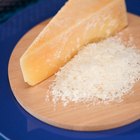
The Differences Between Romano & ...

Substitute for Shredded Parmesan Cheese

Cheeses Similar to Feta
List of High Temperature Cheeses

Aged Cheeses That Do Not Melt

Do You Thaw Frozen Cheese Before ...

How to Cook With Havarti Cheese

What Types of Cheeses Are Unpasteurized?

Baking Substitutions for Ricotta Cheese
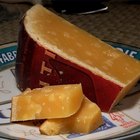
Facts About Gouda Cheese

How Can I Get Brie to the Right ...
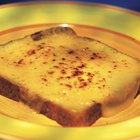
What Kind of Cheese Is a Low Melting ...
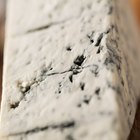
What Good Bacteria Is in Cheese?
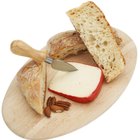
A List of Dutch Cheeses

The Difference Between Fresh Cheese & ...

Types of Pasta Sauces With Tortellini

Can You Use Milk Instead of Cream for ...

Types of Cheese Used in Pizza
Can I Substitute Neufchatel for Cream ...

Can You Eat the Skin on Muenster Cheese?
References
Writer Bio
Wendy Hector has been a writer since 1999 and has been featured in "Scene Boston" and "In The Weeds" magazines. She has a Bachelor of Arts in creative writing from California State University, Northridge and holds a Master of Arts in creative writing from Bath Spa University in England.
Photo Credits
Stockbyte/Stockbyte/Getty Images